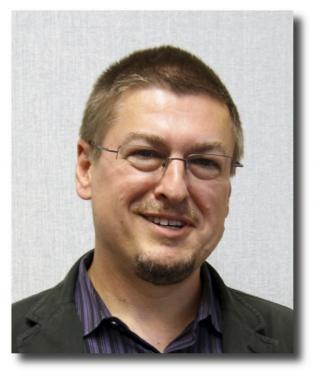Jonathan Simon's expertise is applied and theoretical neuroscience, with emphasis on auditory neuroscience. His research focuses on neural processing in the brain's auditory system, from specialized processing found only in humans (e.g., speech processing) to generalized processing found in most mammals, including auditory attention and sound localization.
Jonathan Simon is a Professor at the University of Maryland, College Park, holding faculty positions in the Department of Electrical & Computer Engineering, the Department of Biology, and the Institute for Systems Research. He is co-director of the KIT-Maryland Magnetoencephalography (MEG) Center, and of the Computational Sensorimotor Systems Laboratory. His main expertise is in applied and theoretical neuroscience, with emphasis on auditory neuroscience. His primary research field is the neural foundations of speech processing and perception (especially for degraded speech), including the role of auditory attention and the effects of aging. He holds a bachelors in physics (Princeton University), a doctorate in physics (University of California, Santa Barbara), and had postdoctoral training in theoretical general relativity (University of Wisconsin-Milwaukee, and University of Maryland, College Park) before embracing the field of neuroscience.
Degrees
-
PhDPhysics, University of California, Santa Barbara
-
MSPhysics, University of California, Santa Barbara
-
ABPhysics, Princeton University
My teaching philosophy is that when a teacher conveys genuine excitement about the subject matter, whether in the classroom or in the lab, the excitement can be contagious: it can encourage students to actively decide to learn, rather than to just be taught.
I stand in a unique position to train both engineering students in biological principles, and biology students in quantitative methods. Classroom-based training of engineering students in the essentials of biology has gained significant traction at many institutions, but the reverse, the training of biology students to use mathematical tools, is still largely undeveloped. My major innovations have been in this direction: classroom-based training of biology students in the use of quantitative methods. But I happily spend considerable efforts training both types of students in both directions.
Can the brain be thought of as a kind of computer? While this may be a topic of debate, few would deny that the brain does perform computations. The subject of my research program is to identify, and describe quantitatively, such neural computations—specifically those performed in the brain's auditory system. This program both sheds light on the function of the brain, and permits us to discover algorithms otherwise unknown to engineering.
The range of problems solved by neural computations span the low-level (e.g. determining the spatial location of a sound source based on the different acoustic signals received by each ear) to the high-level (e.g. in a crowded room, detecting the arrival of a new voice, or the departure of an old one). Often these neural computations are critical to the proper functioning (or survival) of an animal, and so must be performed reliably and quickly, even under adverse circumstances.
The class of neural computations that use the temporal character of the sounds being processed–those for which time plays an important role–are the primary focus of my research.
My research program has components at three different hierarchical levels: auditory neural computations observable macroscopically (at the whole brain level) with magnetoencephalography (MEG), auditory neural computations at the level of small networks of neurons (e.g. a few dozen neurons involved in a single computation), and auditory neural computations at the level of individual neurons. A fourth research area develops new ideas in the signal processing of neural data and in computational neuroscience.
Current Students
-
Grad Advisee Profile
Former Students
-
Student NameMaria ChaitCurrent PositionProfessor (Auditory Cognitive Neuroscience), Ear Institute, University College London
-
Student NameNai DingCurrent PositionAssistant Professor, Zhejiang University
-
Student NameJiachen ZhuoCurrent PositionResearch Associate Professor, University of Maryland Baltimore
-
Student NameJuanjuan XiangCurrent PositionDirector, Ping An Insurance
-
Student NameKim DrnecCurrent PositionPostdoc, Army Research Laboratory (ARL)
-
Student NameAlessandro PresaccoCurrent PositionResearcher, Army Research Laboratory
-
Student NameMarisel Villafañe-DelgadoCurrent PositionJohns Hopkins University Applied Physics Laboratory
-
Student NameFrancisco Cervantes ConstantinoCurrent PositionAdjunct Professor, Universidad de la República, Uruguay
-
Student NameKrishna PuvvadaCurrent PositionApplied Scientist, Amazon
-
Student NamePeng ZanCurrent PositionSr. Software Engineer, Black Sesame Technologies
-
Student NameJoshua KulasinghamCurrent PositionPostdoc, Linköping University




